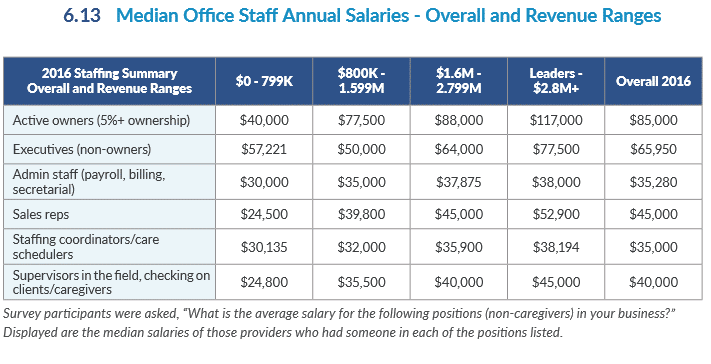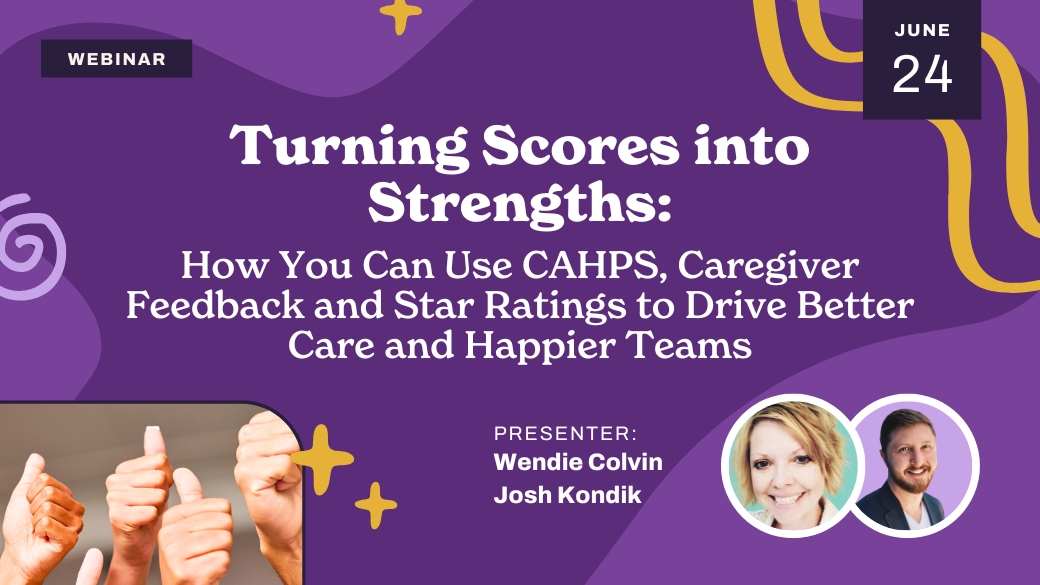How to Help Your Home Care Office Staff All Row in the Same Direction

Ever feel like running your business is like being stuck in a boat that’s just not getting anywhere as fast as you hoped it would? Here’s what you can do.
Do you ever feel like running your business is like being stuck in a boat that’s just not getting anywhere as fast as you hoped it would? Maybe the current is stronger than you expected. Maybe there are other boats in the way. Maybe your staff are rowing in the wrong direction, or maybe some of them are rowing faster than others.
Whatever the reason, your boat is going to get to its destination faster if you can get all your staff members on the boat with you rowing in the right direction—and rowing with all their strength.
Any business owner recognizes that with their leadership team fully engaged and each individually doing their best to help the team move in the right direction, every part of the business is going to go more smoothly. Clients will receive better care, caregivers will enjoy their jobs more, the owner’s life will be easier, and the business will grow more quickly.
Rallying your staff is obviously a huge topic and there are many approaches you can take. However, in our experience working with thousands of home care agencies, these are five of the most important ways that you can empower each member of your team to move their part of the business forward.
- LIVE WEBINAR
Turning Scores into Strengths: How to Use CAHPS and Star Ratings to Create Positive Care Outcomes
Hold them accountable to metrics—but ensure they’re the right metrics.
This is a topic we’ve talked about recently, but let’s dive in a little more. In our recent article on time management, we talked about the importance of finding your “five dials” as an owner—five (or so) metrics that will give you the overall pulse of your agency without dragging you down into the weeds of the business. (If one of your metrics is consistently not where it needs to be, you can dive into the more nitty-gritty numbers to try to solve it.) Each of your staff should have their own dials that help them keep a pulse on their part of the business.
Each staff member should have 1-3 core metrics that they are held accountable to and rewarded on. They should report on these metrics regularly and typically should have some form of incentive or reward based upon these metrics as well.
While the metrics you choose will likely depend on the circumstances and staffing structure of your agency, they’ll typically be things like client satisfaction scores, added billable hours, caregiver turnover rates, and percentage of missed shifts.
What these metrics should be:
What these metrics shouldn’t be:
Hire less, pay more.
One important part of getting your staff rowing in the right direction is simply to attract the right staff and keep them for longer. That’s where this principle comes into play.
In the long run, it’s a lot cheaper to pay a little more and retain your staff longer than to deal with high staffing turnover. Replacing office staff slows down your momentum, takes precious time away from management, and even increases caregiver turnover (watch for more specific statistics on this in the Fall Edition of the 2019 Home Care Benchmarking Study).
At a cost of $2,600 to replace a caregiver, paying a few thousand dollars more to your office staff will very likely pay for itself in lower caregiver turnover costs and better overall results from your team. As such, we recommend paying near top-of-market or at least a little above average. Here’s what median national staff salaries look like in the most recent data from the Home Care Benchmarking Study:

Note: This information is taken from the 2017 Home Care Benchmarking Study. Updated information will be available when the Fall Edition of the 2019 Study is released in September.
Teach your staff members the context of their roles.
By context, we mean that staff need to understand more than how to do their jobs; they need to be taught the big picture of how their position fits into the business and even into the competitive landscape that your agency fits into.
By helping them full understand not only the ‘what’ and the ‘how’ of the role (which we traditionally train on), but also the ‘why’, they’ll become far more effective and better equipped to bring their own insights to drive results.
Here are some questions that can help you understand and teach the context of a staff member’s role:
Invest in your staff’s development.
Your office staff, in some ways even more than your caregivers, are the lifeblood of your agency. Anything you can do to invest in their learning will pay off as they become more confident, more capable, and more engaged in their roles.
Investing in your staff means various things. First, it ties back to the principles of hire less, pay more. Be willing to pay more than most agencies to get the right people. Even if money is tight (which it usually is), make every effort to make competitive salaries a top priority.
Second, it means taking the time to thoroughly train them. Don’t skimp on making sure they have the knowledge to thoroughly do their job, and make yourself or another senior staff member available to staff members who are still learning their roles so that they can ask questions.
Third, facilitate opportunities for their learning. Depending on the role and the circumstances of your company, this could include paying for them to take online training, sending them to conferences, or even providing tuition reimbursement. Talk to your staff and learn what you can do to support their continuing education (both formal and informal)—you might be surprised.
Fourth, commit to helping them achieve their career goals. Understand the trajectory they’d their career to take and support them as they make plans to achieve their goals. As much as possible, make a career ladder available to them at your agency so that they have room to grow with your organization.
Choose your core values and stick to them.
Perhaps more than anything, you need the right culture to be successful. Your company’s culture can be thought of as a garden in which plants are going to grow no matter whether you intend them to or not; your choice is whether you’re going to plant the right seeds, or whether you’re going to let it get overgrown with weeds.
To grow the right culture, be deliberate. Choose your core company’s core values, and then live by them. At Activated Insights, we’ve chosen five core values: Driven, Passionate, Service-Minded, Continuously Learning, and Problem-Solving. We hire, fire, review, and reward based up on these principles. If you want to grow an intentional culture that empowers your staff to do their best work, choose your core values and weave them into everything you do.
Read More
Hungry to figure it all out? Start here.





